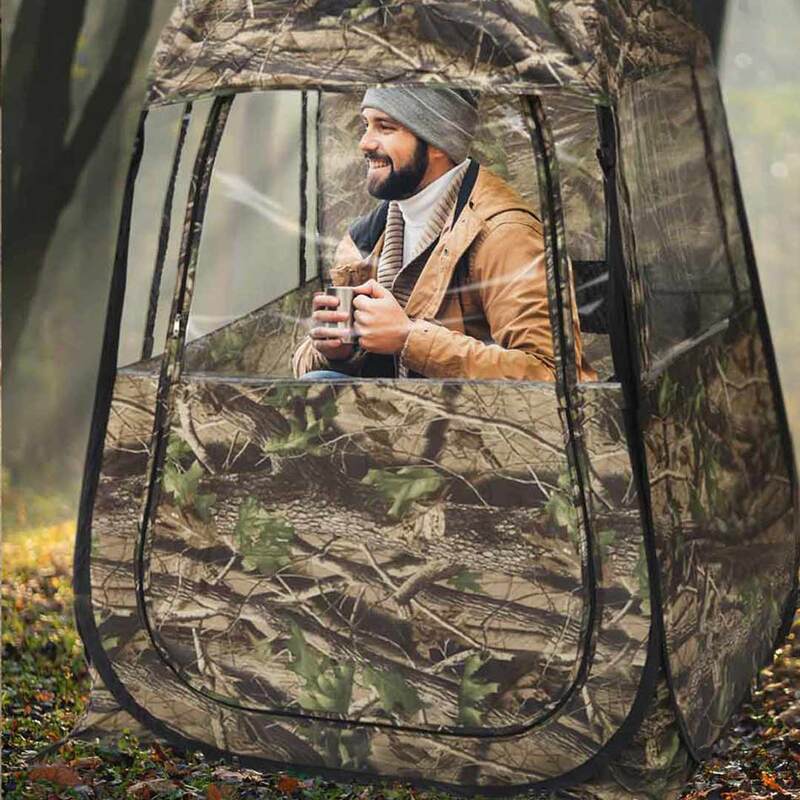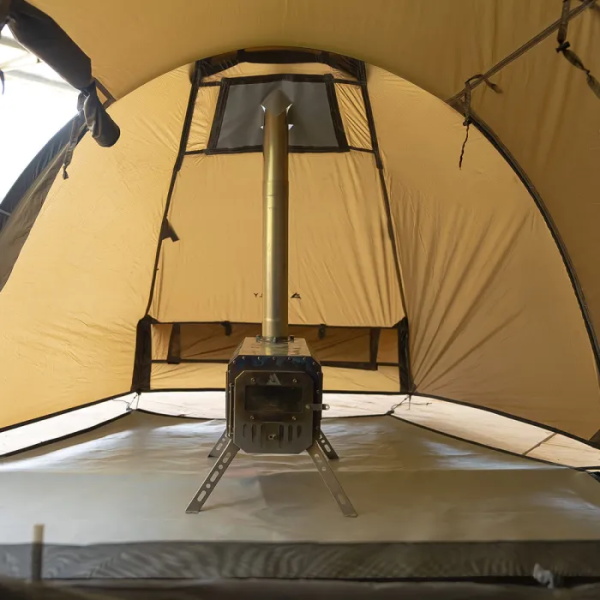Tents have long been an essential tool for camping, outdoor events, and survival situations. They provide shelter and comfort in unpredictable environments. Historically, tents date back thousands of years to ancient civilizations. These structures have evolved significantly over time, adapting to various needs and technologies. Today, tents come in numerous shapes, sizes, and materials. They cater to a wide range of activities, from casual camping trips to elaborate festivals. Understanding the different types of tents and their uses can enhance the outdoor experience. It is essential to learn about features, setup processes, and care instructions to maximize your investment in them.
The Anatomy of a Tent
Sturdy construction is crucial for any tent. Typically, tents consist of a fabric cover, poles, stakes, and a footprint. The fabric cover provides crucial protection against weather elements. Common materials include nylon, polyester, and canvas. Each material has unique properties suited for different conditions. Nylon, for example, is lightweight and waterproof but may not be as durable as canvas. Canvas tents are breathable and great for long-term use but can become heavy.
The Tent Frame
The frame of a tent plays a significant role in its stability. Usually made from aluminum or fiberglass, poles ensure the tent stands tall against harsh winds. Generally, aluminum poles are stronger and lighter than their fiberglass counterparts. However, fiberglass poles can be more affordable, making them a popular choice. When choosing a tent, consider the pole structure. A freestanding design is easier to set up. Alternatively, non-freestanding options may require more stakes but often provide better stability in windy conditions.
Tent Accessories
Various tent accessories greatly enhance the camping experience. From ground tarps to rain flies, these items add functionality. Ground tarps protect the tent floor by preventing wear and tear. Additionally, rain flies provide an extra layer of water resistance. Some tents come equipped with built-in storage pockets and gear lofts. These features help keep the interior organized. Likewise, tent stakes and guylines are essential for securing your tent in windy weather.

Types of Tents
Numerous tent types cater to different activities and conditions. Knowing the options available will better inform your choices. From traditional camping tents to specialized shelters, each type has its pros and cons. Some tents prioritize utility, while others focus on luxury or portability. Understanding these categories can help make your outdoor adventure more enjoyable. The major types generally include dome tents, cabin tents, backpacking tents, and pop-up tents.
Dome Tents
Dome tents are among the most popular camping options. Their rounded shape makes them resistant to wind and rain. Often lightweight, they are also easy to pack and carry. Many dome tents feature a simple setup process, making them accessible for first-time campers. These tents typically provide adequate interior space while maintaining a compact footprint. Additionally, they can accommodate various weather conditions, making them versatile. On the downside, tall individuals might feel cramped in smaller dome tents.
Cabin Tents
For larger groups and families, cabin tents are an attractive option. They offer ample vertical space, allowing for comfortable movement within the tent. Many cabin tents also feature room dividers, which can provide added privacy. This feature is especially useful for families or groups traveling together. Cabin tents generally come equipped with large windows for ventilation. However, they can be bulky and more challenging to transport compared to other tents.
Specialized Tents
Specialized tents serve unique purposes. These include lightweight models designed for backpacking and larger tents for music festivals. Additionally, some tents offer advanced features like built-in climate control. Each type is tailored to meet specific needs and environments. Understanding what these tents offer can significantly enhance your experience. A smart choice ensures a more comfortable stay in the wilderness or at a festival.
Backpacking Tents
Backpacking tents are designed for mobility and weight savings. They typically weigh under three pounds, making them easy to carry. Most offer simple setup processes, which is beneficial when camping in remote areas. Many backpacking tents feature a minimalist design while maximizing space. However, the lightweight materials may not be as durable, requiring regular maintenance.
Festival Tents
Festival tents are unique in their ability to accommodate larger groups. Often spacious, they allow for shared relaxation and socialization. Many incorporate fun colors and designs, creating vibrant atmospheres. Furthermore, these tents often have additional features like shade canopies and built-in flooring. However, they can be bulky to transport, requiring a vehicle for travel.

Choosing the Right Tent
Selecting the right tent involves assessing your specific needs and preferences. Sometimes, the best choice may not be the most popular option. Instead, consider factors like the number of occupants, intended use, and budget. Think about whether you are camping alone or with family. Additionally, evaluate the season and climate where you’ll be camping. Each of these considerations can significantly impact your enjoyment of the trip.
Assessing Capacity
Capacity is one of the most critical factors in tent selection. Most tents indicate how many people they can accommodate comfortably. However, consider if you want additional space for gear or sleeping bags. It’s often advisable to choose a tent that can hold one or two more people than you need. This extra room allows for greater comfort and ventilation.
Seasonal Considerations
Another crucial aspect involves seasonal considerations for camping. Different tents cater to various weather conditions. For instance, summer tents usually focus on breathability. Conversely, winter tents are built to withstand snow and frigid temperatures. Three-season tents are designed for versatility and can be used in most conditions. Knowing the climate ahead of your trip helps in choosing the right shelter.
Pitching a Tent
Setting up a tent may seem straightforward, but it requires some preparation. First, it’s essential to choose a suitable location free of rocks or debris. Ideally, the ground should be level to prevent water accumulation. Look for a sheltered spot away from strong winds and falling branches. Next, lay down your footprint if you have one to protect against moisture and damage. Many tents consist of color-coded poles, making assembly easier.
Step-by-step Setup
Begin by laying out your tent and identifying the poles. Assemble the poles, inserting them into the tent sleeves or clips. If using a freestanding tent, insert the stakes into the ground at each corner. Once the tent is secure, attach the rain fly if applicable. Lastly, secure any guylines and adjust for stability as necessary. This process can be completed swiftly with a little practice.
Takedown Tips
Takedown is as crucial as setup. Begin by removing stakes and guylines to allow the tent to collapse. Next, clean the tent of debris and wipe away moisture. Then, pack everything neatly into the storage bags to avoid damage. Finally, store the tent in a cool, dry spot until your next adventure. Proper maintenance extends the life of your tent significantly.

Caring for Your Tent
Proper care ensures longevity and enhanced performance of your camping gear. Regular cleaning and maintenance keep it in functional condition. Harmful elements like dirt, moisture, and UV rays can cause deterioration. Therefore, knowing how to protect your investment is vital. It’s crucial to follow specific guidelines depending on the tent material and model.
Cleaning Procedures
Cleaning your tent is essential after every camping trip. Begin by gently shaking it out to remove dirt and debris. For fabric tents, use a soft cloth and mild soap. Avoid harsh chemicals, as they can harm waterproof coatings. Allow your tent to air dry completely to prevent mold and mildew.
Storage Practices
Storing your tent correctly will prolong its life. Always ensure the tent is completely dry before packing away. Store it in a cool, dry place away from direct sunlight. Ideally, use a breathable storage bag instead of plastic. This practice allows for better air circulation and prevents growth within the tent.
Conclusion: The Adventure Awaits
Tents serve a myriad of purposes for outdoor enthusiasts. They provide a safe shelter amid nature’s unpredictability. By understanding the different types available, you enhance your experience. Furthermore, caring for and correctly using these structures ensures they last for many adventures to come. Ultimately, the joy of camping extends far beyond the tent itself. Embrace the adventure that awaits, and enjoy every moment spent in the great outdoors.
